Menu
For people in New York looking into their tooth replacement options, there are several different choices that can result in great outcomes and natural, comfortable smiles. Dental technologies have advanced considerably over the years, and our team can work with you to choose the right form of denture to help you restore the function and appearance of your teeth. Two of the major types of dental replacement available are full and partial dentures, and each has its own advantages for people who want to improve their oral health.
Dentures serve several functions, from replacing missing teeth and filling gaps to preventing the surrounding teeth from shifting, weakening or losing their position. Modern dentures are fully customized for your unique smile, fitting the contours of your mouth. They can be removed for regular cleaning and present a natural appearance.
Many people struggle with chewing food properly and experience discomfort after tooth loss, while others refrain from smiling in order to hide the missing teeth. People may also experience difficulty speaking, singing or even whistling clearly with missing teeth. Unfilled gaps can also lead to drooping facial muscles and an older appearance over time. People in Franklin Square don’t need to live with tooth loss; denture solutions can provide increased comfort, enhance your appearance and improve your confidence.
Full Dentures
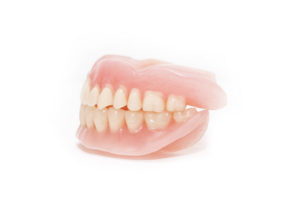
Full dentures are designed to replace all of the teeth in your mouth or on a single arch (upper or lower). The entire arch will be constructed for a comfortable fit and a natural, pleasing appearance. If there are some teeth remaining in the arch where the full denture will be placed, they will need to be extracted. After the extractions are completed and your gums are prepared, a full denture can be molded to fit your mouth. These hold securely to the roof or floor of the mouth for comfortable wearing. In addition, these types of full dentures are completely removable and can be taken out overnight and for regular cleaning.
In most cases, full dentures are best-suited for people missing all or almost all of their teeth along at least one dental arch. There are a few different options for the construction of full dentures:
- Conventional dentures – These dentures are shaped to fit the gums after all tooth extractions are completed and the gum has been healed. They are available for placement after healing. With our on-site laboratory, you can feel confident in our swift, precise service.
- Immediate dentures – These dentures are made in advance and are placed immediately after the extraction. Many people favor immediate dentures because they can enjoy full teeth instantly. At the same time, their fit may require additional adjustment to compensate for the changes in the gums after tooth extraction. At Island Dental Associates, we offer same-day dentures at our on-site laboratory.
Partial Dentures
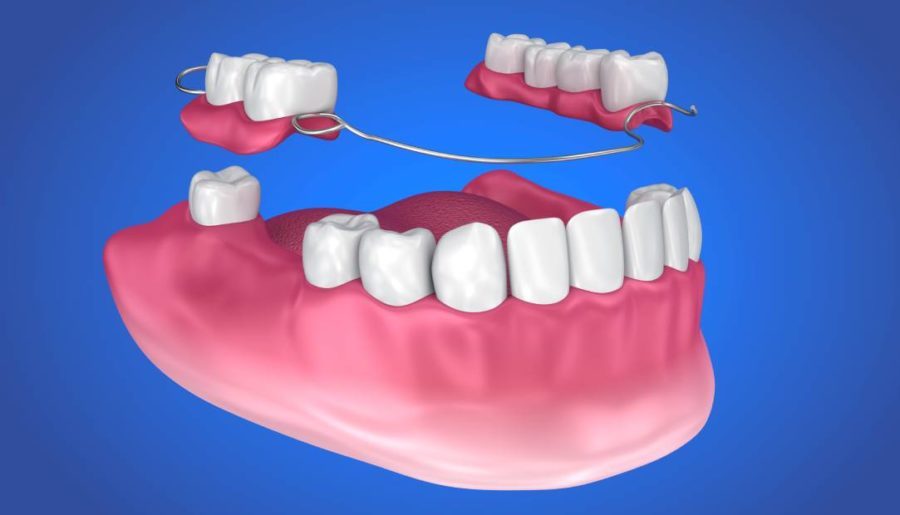
For people in Franklin Square, NY, who are missing several teeth in a row, partial dentures may be an excellent solution to tooth loss. Partial dentures are crafted from a plate with one or more prosthetic teeth attached in order to fill in any gaps in the smile. These are connected to a plastic base or metal frame that holds the denture in place. They are designed so as to look natural; the framework that allows the teeth to fill in the gaps is not visible. Partial dentures are removable and can be taken out overnight and for cleaning, much like a full denture.
There are other partial denture options that may be appropriate for specific situations. For example, a fixed bridge remains in place. It allows a replacement tooth to be placed between crowns atop adjacent natural teeth. Unlike a complete partial denture, fixed bridges remain in place.
Additional Tooth Replacement Options
There are some alternatives to dentures that can help people enjoy a full, natural smile. Dental implants can be especially helpful in restoring confidence and producing a look and feel almost like natural teeth. Implants are suited to people who want to replace one or a few teeth and also those who want a full arch replacement. An implant-supported denture attaches to several titanium dental implants placed in the jaw bone. A full arch of teeth fits well to four to six implants, keeping them firmly in place and presenting a fully natural appearance.
Post-Denture Dental Care
After your dentures have been fitted and created, oral hygiene remains important to protect your gums. You can clean your dentures regularly to help ensure they remain attractive and natural in appearance. In addition, it is important to keep up with regular dental care visits. Your dentist can adjust, reline and care for your dentures to make sure that they fit comfortably. Our experienced New York dentists can provide excellent ongoing care for your dentures, and our in-office laboratory can repair or reline your dentures on the same day.
Contact us at Island Dental Associates by using our simple online form or calling our office at 516-271-0769. Our experienced dentists, periodontists, and oral surgeons can help you to restore and rediscover your smile.
Caring for Veneers
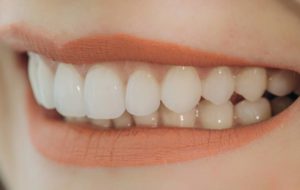
Even if you try your hardest to take care of your teeth, you may still be unhappy with the way that they look. Discoloration, staining, gummy smiles, and small chips and cracks can all affect the way that your smile looks. Instead of having to go for more invasive treatment that may or may not even be needed, veneers can cover up the small imperfections at the front of your smile. Veneers are comfortable to wear and are made to be durable, normally lasting an average of 10 or more years.
What are Veneers?
Veneers are typically made out of porcelain and look like small, thin shells. Veneers are made for each individual patient, ensuring that they provide a comfortable, even fit over your existing teeth. Veneers are considered more of a cosmetic option because they cover-up flaws and imperfections and aren’t necessarily corrective or restorative in nature. However, despite veneers being more of a cosmetic option for patients, they can improve the overall look and aesthetic appeal of your smile, boosting your self-esteem and giving you the confidence to smile again. Veneers are incredibly thin, so most patients who have them don’t even know they’re there.
What Can Veneers Correct?
Veneers can be used to cover small and even large imperfections at the front of your smile. These thin porcelain shells are permanently attached to your teeth, covering any and all flaws that might cause you to feel bad about your appearance. Prior to having dental veneers placed on your teeth, you’ll need a consultation and exam to determine if the procedure is right for you. Most people who want veneers and feel they’d benefit from them can have the procedure done quickly and effortlessly.
Some imperfections and flaws that veneers can correct include:
- Discoloration
- Staining
- Chipped Teeth
- Small Cracks
- “Gummy” Smiles
- Uneven Teeth
- Dark, Unsightly Teeth
Porcelain veneers are matched to your existing teeth, allowing them to look completely natural. You may want veneers as a permanent option to enhance your smile or you may be looking for veneers because you have an upcoming wedding, class reunion or important event or performance that relies on you looking your best. Most patients with veneers love the way that their smile looks so much after being restored that they can’t live without their new cosmetic restorations.
How to Care for Your Veneers
Veneers are attached to the front of your teeth using a permanent dental cement. This allows the thin porcelain shells to attach fully to the enamel, creating a secure and lasting adhesion. Once the veneers are permanently attached, they are there to stay and can last for about 10 years before you can either have them removed or replaced as needed. However, despite veneers being durable and lasting, special attention needs to be taken to ensure they do not become loose or fall out. You can brush your veneers as you would any of your other teeth. When flossing, be extra careful when pushing and pulling the string floss between veneered teeth. This will prevent the veneers from becoming loose, chipping or cracking.
The beauty about veneers is that other than being careful when flossing your teeth, you can treat them as you would any other tooth. Some patients try to avoid using their front teeth to bite large, hard pieces of food like you’d do when biting into an apple. If, however, a veneer becomes loose or even falls out, you can have the restoration reattached using a strong adhesive dental-quality cement. If your veneer falls out, be sure to grab it and bring it in with you when visiting the office.
What to Expect During and After the Procedure
The veneer procedure takes a very short period of time but typically requires at least two visits. Your first visit involves buffing the front teeth down so that they provide adequate room for the porcelain veneers. Impressions, also known as molds, are taken of your front teeth and sent to a lab where the veneers are made for you. You’ll come back into the office once the veneers have been made and will have them carefully attached to the front teeth. Slight adjustments may be necessary to get the veneers to look and feel natural and comfortable. After the procedure is finished, you can enjoy a bright, beautiful new smile that required no surgery, incisions or sutures.
For men and women living in Franklin Square, NY, dental veneers are a great way to enhance your smile and cover imperfections that would otherwise require a lot of treatment to fix. Veneers are long-lasting, durable and require little to no aftercare. You will benefit from feeling great about your new smile and will find that veneers help to boost your self-esteem and confidence in smiling.
Implants vs Dentures
Both dentures and implants are incredibly beneficial dental options for men and women living in Franklin Square and Long Island, New York. Both options work to enhance and correct missing dentition and are suitable for all types of patients. Understanding the differences between an implant and a denture can help you to decide which one is best suited to your oral health needs.
What are Dental Implants?
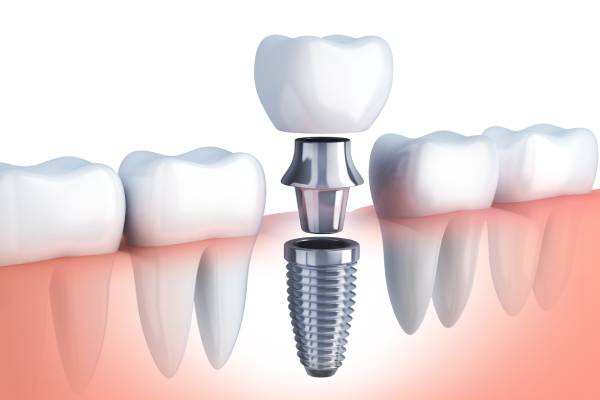
Dental implants are typically made out of surgical-grade titanium, which has been found to be safe when used in the human body. Implants typically involve three different components: the post, the screw or connector, and the dental crown. The post is surgically placed underneath the gum line and into the bone. Implants rely on a process that is known as osseointegration. Osseointegration generally involves the natural bone of your jaw fusing with the titanium implant post. This can take anywhere from three to six months, where you’ll require routine dental checkups to ensure the implant is healing successfully.
Once the implant has become fully osseointegrated, you’ll come back into the office and have a dental crown made for the actual implant. The crown is placed onto the connector that is then attached to the implant. The final result is a gorgeous, natural-looking tooth and an implant that is permanent. Once bonded, the implant post will never need to be repaired or replaced and can last a lifetime. The dental crown that is placed on the implant may need to be replaced anywhere between seven to 15 years. Taking good care of your implant crown and preventing damage to the tooth can greatly affect the life of the restoration.
What are Dentures?
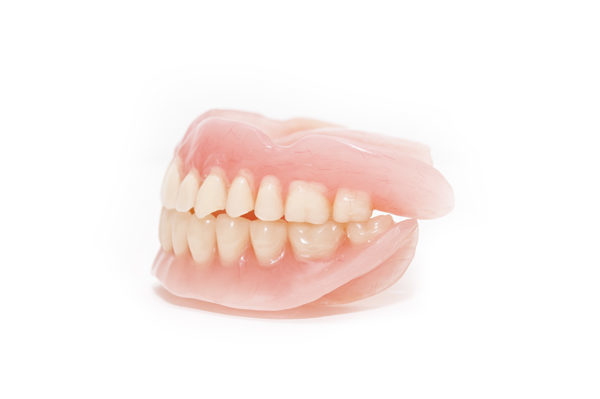
Dentures are removable prosthetic appliances that replace many missing teeth at once. There are two types of dentures: partial and full. Partial dentures are worn in order to replace several missing teeth where a full denture is worn to replace an entire arch of missing teeth. Dentures are made out of realistic-looking materials and custom created to fit comfortably and securely. Dentures can last for up to seven years and provide patients with a full, youthful smile. Dentures should be soaked and cleaned at night while they’re not being worn to prevent odors and staining. The prosthetic is created by taking impressions of the mouth and then using these impressions to custom make the appliance. You’ll come into the office once the prosthetic has been completed so that it can be fitted and adjusted.
What is the Difference Between Dentures and Implants?
Implants typically replace just one tooth at a time, though multiple implants can be placed at once and fixed bridges or several crowns can be placed after the implants have healed. Unlike implants, dentures do not require surgery prior to being fitted for the prosthetic unless decayed or loose teeth have to be extracted. You may not be a good candidate for implants if you have poor bone density or if you have a medical condition that prevents your body from healing naturally. Both implants and dentures have benefits that are suitable for all types of patients.
How Can Dentures and Implants Work Together?
Implants and dentures can actually work together to create a full, flawless smile. When implants are placed and have been given some time to heal, a new denture plate can be specially made to clip onto these new implants. This is often referred to as an implant-supported denture. Implant-supported dentures offer a more secure fit and are often suitable for patients who wear ill-fitting appliances or who are tired of having a plate slip and fall out throughout the day. Implants allow you to securely snap the denture into place without the need for adhesives and bonding gels. The procedure requires that several implants be placed on one arch to fully support the prosthetic.
Both dentures and implants are beneficial in their own ways. Some patients would rather be fitted with a prosthetic than go for surgery, while others want the security in knowing they have a permanent implant and can enhance their smile individually. Others may choose implant-supported dentures that combine the best of both worlds. With the help of a consultation with Island Dental, you can choose the dental option that best suits your needs. Island Dental has same day service as well as technicians onsite that will work with you to find the tooth replacement procedure that fits your budget as well as your dental health. The consultation is the perfect time for you to ask any questions regarding the procedure that you’ll be having done.
A fun certainty about Burger King is that it gives superstars who have upheld it in the past free BK Gold Cards, which means they streak the gold card and get free burgers and fries at whatever point they need.
One clever BK Gold Card story that exhibits the status it gives its proprietor is when Jay Leno flashed his at a Burger King and the child working the enroll’s jaw dropped as he asked, “Where did you get this?”, not awed by Leno’s Porsche Carrera or Today Show status, yet overwhelmed by his BK Gold Card status.
Fun certainty #2, did you know the authors of the first Burger King were really roused to open their eatery network subsequent to seeing the first McDonald’s store in San Bernardino California?
The two chains are as yet wild contenders today, despite the fact that McDonald’s is the more fruitful chain and the biggest cheap food eatery network in the whole world.
Keith J. Kramer and his significant other’s uncle Matthew Burns established the primary Burger King in 1953 in Jacksonville Florida.
They called it “Insta-Burger King” in view of the “Insta-grills” the store used to warm its ground sirloin sandwich meat.
In 1959 the organization hit an unpleasant spot and was obtained by a portion of its franchisees situated in Miami Florida, James McLamore and David R. Edgerton. The two rebuilt the organization including renaming it to the now-acclaimed name “Burger King”.
The two ran the organization together for the following 7 years and sold it to Pillsbury in 1967. Pillsbury dealt with the affix from the 70s to 80s, and even got a McDonald’s executive, Donald N. Smith, to help rebuild and roll out more improvements.
The organization enhanced for some time however slipped back generously. In 1989 it was bought by Grand Metropolitan and its successor Diageo. Under this administration, the organization totally slipped because of disregard.
It was set available to be purchased in 2000 and purchased by TPG Capital for $1.5 billion (USD) in 2002. It didn’t passage much better a previous couple of years however the esteem did increment and it was at long last sold for $3.26 billion USD to 3G Capital of Brazil.
Today Burger King is a drive-thru food chain with in excess of 15,000 stores everywhere throughout the world.
It serves ground sirloin sandwiches, french fries, soft drink and a lot more things that turn out in only a couple of minutes after ordering. Keep perusing to discover how you can be a piece of the experience to give the chain criticism and help it enhance, while likewise catching a free sandwich for yourself.
As a child, on extraordinary events that weren’t “excessively exceptional”, my father would regularly take my sister and me to the drive-thru food chain McDonald’s. I never had much involvement with Burger King, until the point when this Survey came around. Presently I’m ready to get a free Whopper Sandwich or Chicken Sandwich each and every time I eat at Burger King, which makes it more enticing in my very own eyes than even McDonalds.
With the new MyBKExperience review, you can utilize a code on your receipt to take an online overview and consequently get a code that you can use at any Burger King area inside 48 hours in the wake of taking the study to get a free Whopper or Chicken Sandwich of your decision.
The most effective method to Enter The MyBkExperience Survey
- Visit https://www.mybkexperience.live/
- Enter the eatery number code at the highest point of your ongoing receipt into the overview clear on the principal page of the site
- Pick the dialect, English or French, you might want to continue in
- On the following page enter the 20 digit overview code additionally on your receipt
- Snap ‘Begin’ to begin the official overview
- Answer whatever remains of the study questions, giving Burger King your legitimate criticism about your experience so they can utilize that to enhance future encounters
- Toward the finish of the review, you will be given an approval code you can get to your next Burger King visit to get your decision of a free Whopper or Chicken sandwich
- To reclaim your free sandwich coupon you’ll have to purchase any size beverage and a side at the season of your following visit
MyBKExperience.com Survey Eligibility
- To enter the Burger King overview you should have a substantial receipt from your ongoing feast at a Burger King area
- You’ll have to spare your receipt to enter the code on the receipt into the online overview
- You’ll require a PC and web access to get to the overview
- You’ll additionally need to talk either English or French, as those are the two dialects the study is offered in
- To recover your complimentary gift coupon, you’ll have to likewise buy any S/M/L measure drink and a required side at the standard cost
- Money esteem 1/100 of a penny
- Limit 1 review for every visitor every month
- Must take review inside 48 hours of a visit to be qualified
- Not substantial with some other offer
- Not accessible to workers or their families
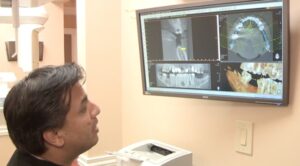
Without specialized equipment, a dentist can find it difficult to diagnose conditions and perform certain procedures. An accurate diagnosis is imperative in order to provide the correct treatment.
This is the main reason why dentists rely so heavily on regular dental x-rays in order to correctly diagnose a wide range of oral health conditions.
However, even x-rays have some downfalls and may be inadequate to provide sufficient detail of all areas of the mouth. This can be risky as infection or other problems may exist that cannot be detected using the visual aid of an x-ray.
This is where CT (Computed Tomography) or CAT scans come into play. Unlike an x-ray, these scans provide a detailed 3D image of the entire mouth. This makes it a much more effective tool in diagnosing conditions that are more complicated or difficult to detect. CT scans do not require any special preparation by the patient although it is generally recommended to wear loose clothing during the examination. It is also necessary to remove jewelry, hearing aids, glasses or items that may interfere with producing a clear image.
Some of the greatest benefits of using CT scan in dentistry instead of regular x-rays include:
Provides A Detailed Image Of Entire Mouth
Nothing is hidden from a CT scan and every angle is covered in providing the 3D image. This provides a dentist with a view that they may not have while physically examining the mouth or from an x-ray. Most dentists prefer to have a CT scan performed on their patients in order to carry out a comprehensive assessment of the mouth.
Bone and Soft Tissue Imaging
While x-rays have long been used to capture images of both the teeth and the jawbone, the detail is often inadequate and soft tissue is often excluded from the image altogether. CT scans on the other hand provide details of the bones, teeth as well as soft tissue that an x-ray simply cannot match.
Free 3d CT Scan For Dental Implants at Island Dental Associates
Efficient and Convenient
The imaging process for a CT scan is incredibly fast. A full scan of the entire mouth generally only takes between 20 and 40 seconds. Scans targeting specific areas of the mouth are even faster and can take as little as 10 seconds. This provides patients with the benefit of shorter exposure to radiation than they would experience with an x-ray. Prolonged exposure to radiation can be dangerous.
Minimal Radiation
CT scans use radiation to create images. Exposure to radiation is risky and can result in illnesses and diseases such as cancer. However, small amounts of radiation are considered to carry less risk. A CT scan has the ability to target minuscule amounts of radiation to provide a detailed image thereby reducing the risks associated with radiation exposure. Ct scans are therefore a far safer option as a diagnostic tool for patients and dentists.
At Island Dental Associates, we offer free 3D CT scans when patients come in for a free consultation for dental implants, or some other cosmetic dental procedure. Call us today to schedule an appointment!
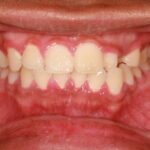 Also known as gum disease, periodontal disease or periodontitis affects the connective tissue that links the teeth to the bone, its main symptom being progressive bone loss. Left untreated, periodontitis leads eventually to the loss of the teeth.
Also known as gum disease, periodontal disease or periodontitis affects the connective tissue that links the teeth to the bone, its main symptom being progressive bone loss. Left untreated, periodontitis leads eventually to the loss of the teeth.
This disease is characterized by massive bacteria growths located either between the teeth or along the gum line. In severe cases, teeth start to become loose, the ultimate consequence being their loss. About 50% of all people over 30 years of age suffer from a mild form of periodontal disease.
 Partial dentures are a type of dental bridge that is commonly used by people who have lost just a couple of teeth due to malnutrition, tooth decay or a jaw-related accident. When there are gaps in your teeth it can result in bacteria and food forming in these empty spaces.
Partial dentures are a type of dental bridge that is commonly used by people who have lost just a couple of teeth due to malnutrition, tooth decay or a jaw-related accident. When there are gaps in your teeth it can result in bacteria and food forming in these empty spaces.
In these cases, partial dentures are used by dentists to fill the gaps in and prevent gum and tooth decay eventually.
In addition to helping you eat and speak better, they also help to prevent your lips and cheeks from caving in which can often happen whenever a significant tooth loss occurs.
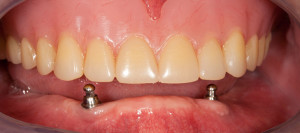 Removable dentures are not the only option for people who have lost many or all of their teeth to gum disease and tooth decay. Implants can help a person by supporting a stable and secure prosthetic replacement for teeth. Implant placement is an option for stabilizing dentures.
Removable dentures are not the only option for people who have lost many or all of their teeth to gum disease and tooth decay. Implants can help a person by supporting a stable and secure prosthetic replacement for teeth. Implant placement is an option for stabilizing dentures.
The dentist will need to study x-rays and models of your teeth and perform a thorough evaluation of your medical history. The information they gather will help them determine which procedure is best for you.
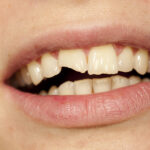 If you have/were involved in an accident where some of your teeth were knocked off or are broken, you should then consider taking on restorative dentistry. This procedure involves improving your dental aesthetics by repairing broken teeth or replacing any lost ones. Some of the reason and benefits of taking on restorative dentistry are discussed below.
If you have/were involved in an accident where some of your teeth were knocked off or are broken, you should then consider taking on restorative dentistry. This procedure involves improving your dental aesthetics by repairing broken teeth or replacing any lost ones. Some of the reason and benefits of taking on restorative dentistry are discussed below.
1. Improves Self Confidence
Missing or broken teeth can have a huge impact on the quality of smile and self-confidence as well. Most people with missing or broken teeth avoid smiling or even laughing for fear of getting embarrassed. While it may sound petty, such limitations lead to social anxiety and in extreme cases, depression. Thanks to restorative dentistry, you never have to deal with this as your dentist will help restore missing or chipped teeth.
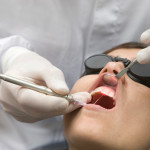 Regardless of a person’s age, one of the most daunting parts of a dentist visit would have to be the drilling. This process typically involves the smell of burning teeth that are ground into dust while the dentist pokes around in the gums with horrible looking tools that appear as if they have been derived from a torture chamber.
Regardless of a person’s age, one of the most daunting parts of a dentist visit would have to be the drilling. This process typically involves the smell of burning teeth that are ground into dust while the dentist pokes around in the gums with horrible looking tools that appear as if they have been derived from a torture chamber.
It comes as a relief to various people, that today more of the dentists are now using tools powered by laser technology which is doing away with the older types of drill machines.
